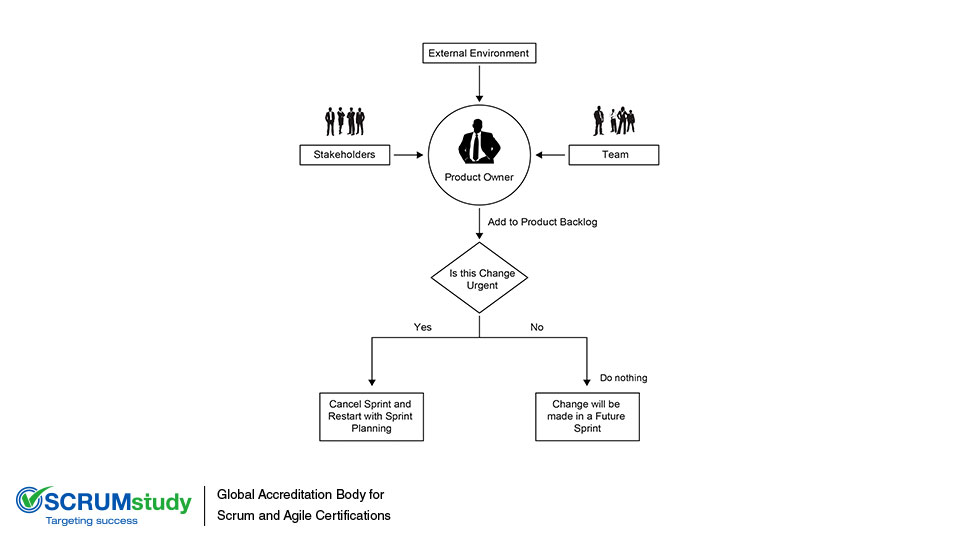In Scrum, all requirements related to an ongoing Sprint are frozen during the Sprint. No change is introduced until the Sprint ends, unless a change is deemed to be significant enough to stop the Sprint. In the case of an urgent change, the Sprint is terminated and the team meets to plan a new Sprint. This is how Scrum accepts changes without creating the problem of changing release dates.
If there is a Change Request that may have a significant impact on a Sprint in progress, the Product Owner, after consultation with relevant stakeholders, decides whether the change can wait until the next Sprint or represents an urgent situation which may require ending the current Sprint and starting a new one. Scrum framework clearly specifies that the scope of a Sprint cannot be changed once the Sprint begins. If the required change is so important that the results of the Sprint would be worthless without it, then the Sprint should be terminated. If not, then the change is incorporated into a later Sprint. This is illustrated by the following diagram:
There is only one exception to this rule about not changing the scope of a Sprint once a Sprint begins. If the Scrum Team determines it has heavily overestimated the effort during the Sprint and has spare capacity to implement additional User Stories, the team can ask the Product Owner which additional User Stories should be included in the current Sprint.
By locking down the scope of every Sprint, the team is able to efficiently optimize and manage their work and effort. An additional benefit is that the team does not have to worry about managing changes once they start working on a Sprint. This is a big advantage of the Scrum framework as compared with traditional project management. In traditional project management, changes can be requested and approved anytime during the project’s lifecycle. This often creates confusion for project team members, decreases team motivation due to discontinuity, and results in a lack of focus and the team feeling that “nothing ever gets done.” On the other hand, in Scrum projects, changes are not allowed once a Sprint starts. This ensures that in every Sprint, the team completes deliverables and tasks are Done. Furthermore, the business recognizes tangible benefits from potentially shippable Deliverables at the end of each Sprint.
Moreover, since the Product Owner and Stakeholders are aware that changes are not allowed once a Sprint begins and a Sprint lasts between 1 and 6 weeks, they define and prioritize requirements.











An impressive share! I have just forwarded this onto a friend who was doing
a little research on this. And he in fact bought me dinner because I found it for him…
lol. So allow me to reword this…. Thanks for the meal!!
But yeah, thanx for spending the time to talk about this matter here
on your internet site. iPadian Crack Download